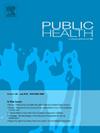通过循证建模策略改善护理途径:范围综述
IF 3.9
3区 医学
Q1 PUBLIC, ENVIRONMENTAL & OCCUPATIONAL HEALTH
引用次数: 0
摘要
目的非传染性疾病和传染性疾病是严重的公共卫生问题,严重影响了卫生保健系统。护理路径(CP)概念已成为改善护理协调和提供的一个有希望的框架,但其复杂性往往阻碍了实施。建模及其各种方法代表了解决这一挑战的一种有价值的方法。将这些方法系统化对于加强CPs至关重要。这个范围审查的目的是描述和分析CP建模方法。研究设计范围审查。方法按照PRISMA-ScR指南,在PubMed、Web of science和Embase中进行检索。纳入标准为:(i)英文出版物;(ii)人类研究,(iii) 2019年1月1日至2024年4月3日之间发表的研究,以及(iv)使用建模来分析CPs。对于每篇纳入的出版物,根据建模目标、使用的方法、技术的功能及其各自的优势和局限性提取数据并进行分类。结果41篇纳入的文献分析显示,CP建模的主要目标是护理质量(46.3%)、持续改进(31.7%)和流程优化(22.0%)。建模方法有定性(41.5%)、定量(34.1%)和混合(24.4%)。技术目标是描述(48.8%),决策支持(36.6%)和预测(14.6%)。定性方法(68.5%)在关注护理质量的研究中较为常见。只有11篇文章在至少两项研究中使用了类似的方法。CP建模的主要缺点是数据的可用性和实现的可接受性。本综述确定了CP建模中的关键类别和常用方法,提供了一个框架,帮助研究人员和医疗保健专业人员改进CP的设计和实施,从而获得更好的患者结果和更高效的医疗保健系统。本文章由计算机程序翻译,如有差异,请以英文原文为准。
Improving care pathways through evidence-based modeling strategies: a scoping review
Objectives
Noncommunicable and communicable diseases represent significant public health problems, heavily straining healthcare systems. The care pathway (CP) concept has emerged as a promising framework to improve care coordination and delivery, but its complexity often hinders implementation. Modeling, with its various methodologies, represents a valuable approach to address this challenge. Systematizing these methodologies is essential for enhancing CPs. This scoping review aims to describe and analyze CP modeling methodologies.
Study design
Scoping review.
Methods
Following PRISMA-ScR guidelines, searches were performed in PubMed, Web of science and Embase. Inclusion criteria were: (i) publications in English; (ii) human studies, (iii) published between January 1, 2019 and April 3, 2024 and (iv) use of modeling to analyze CPs. For each publication included, data were extracted and categorized based on modeling goals, methods used, functions of the techniques and their respective strengths and limitations.
Results
Analysis of the 41 included articles revealed that the main goals of CP modeling were quality of care (46.3 %), continuous improvement (31.7 %), and process optimization (22.0 %). The methods used for modeling were qualitative (41.5 %), quantitative (34.1 %), or mixed (24.4 %). Technical goals were description (48.8 %), decision support (36.6 %), and prediction (14.6 %). Qualitative methods (68.5 %) were common in studies focused on quality of care. Only 11 articles shared similar methodologies across at least two studies. Key weaknesses of CP modeling were data availability and implementation acceptance.
Conclusions
This scoping review identified key categories and commonly used methodologies in CP modeling, offering a framework to help researchers and healthcare professionals improve CP design and implementation, leading to better patient outcomes and more efficient healthcare systems.
求助全文
通过发布文献求助,成功后即可免费获取论文全文。
去求助
来源期刊

Public Health
医学-公共卫生、环境卫生与职业卫生
CiteScore
7.60
自引率
0.00%
发文量
280
审稿时长
37 days
期刊介绍:
Public Health is an international, multidisciplinary peer-reviewed journal. It publishes original papers, reviews and short reports on all aspects of the science, philosophy, and practice of public health.
 求助内容:
求助内容: 应助结果提醒方式:
应助结果提醒方式:


